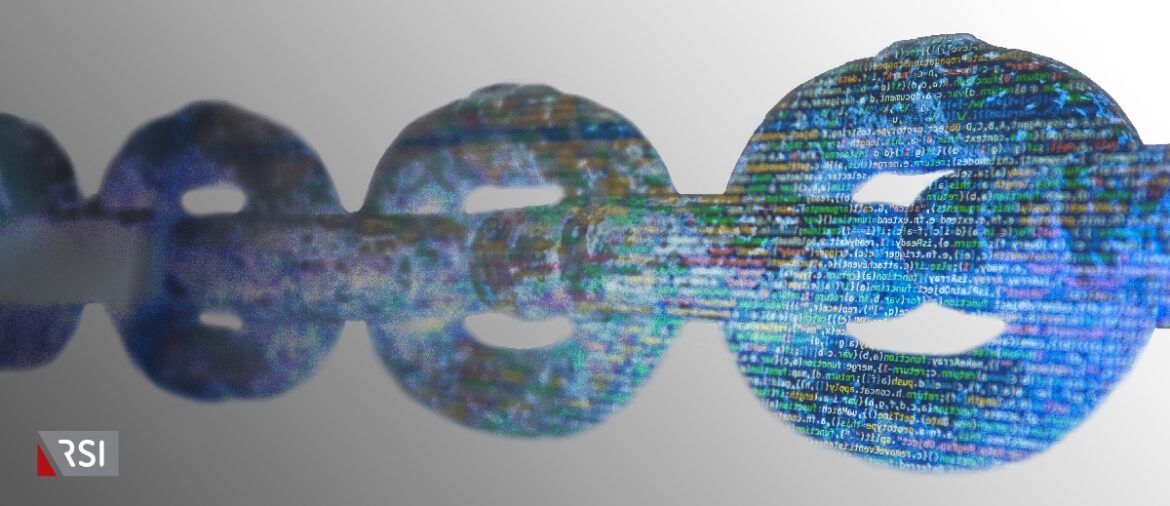Intro
Given the media attention on Bitcoins daily value gyrations, its easy to be distracted away from the technology that makes the cryptocurrency (and its ilk) possible. Todays blog isnt to debate the true value or future of Bitcoin, but rather to examine Blockchain, the protocol that enables Bitcoins currency sovereignty, along with a host of other possible applications.
That said, a discussion of blockchain should start with understanding how it fits into the Bitcoin scheme. Along with penny stocks and irrational exuberance Bitcoin is well entrenched in todays financial lexicon, known as a virtual currency with its value wildly fluctuating week to week. The currency was originally envisioned as a way to exchange tokens of value online without the need for intermediaries, such as banks.
In the traditional banking model, we deposit funds into a central entity, with the bank keeping track of our stored funds, its increasing / declining value, processing additive or subtractive transactions that occur, etc. Even with the advent of the Internet and the rise of electronic funds, banks still reigned as the central repository and processor of currency electrons vs. physical greenbacks. Blockchain entirely removes this bank middle man and allows for secure peer-to-peer transactions and exchanges of currency.
The Method & Process
The records of these transactions are contained within a virtual, metaphorical distributed ledger — effectively thousands of computers spread across the world that all keep track of an ever expanding record of transactions. A set of pending transactions (buy / sell orders) is aggregated into a block, and then transformed into a mathematical puzzle. Global users / computers set out to solve and then validate the solution. If enough groups agree that the solution presented was correct, thus establishing the transactions validity via consensus, only then is that block of transactions accepted and added to an ever growing chain of previously validated blocks, hence the term blockchain.
A persons identity or account on the blockchain is an encrypted key, a unique string of alphanumeric characters that was established using an original seed phrase. The phrase can be a long set of words or numbers that is then transformed into the key using a software encryption tool. There can be more steps involved to generate a persons / organizations unique string / address on a given blockchain, but suffice it to say, the process is more involved than just logging in with a simple ID and password.
Implications
And so, what is lost in the frenzy of Bitcoin valuation discussions, is recognition / an appreciation that secure transactions no longer require banks. In a blockchain peer network, management and authorization of transactions are spread across the network. There is no single point of failure. Any attempt to defraud the shared ledger is much more difficult given the number of eyes constantly interrogating the process. All participants are highly vested in the integrity of their transactions and so are motivated to shine a light of transparency if they detect fraud.
Finally, the transactions recorded on these successive blockchains are immutable; all activity is appended / added onto the chain, and never altered or deleted. Any change to the value of your Bitcoin / other cryptocurrency is recorded and added to the chain. The original transaction and its original timestamp and original account ID remain embedded in the chain and always accessible for all to see.
Blockchain works for Bitcoin because there is only one version of the truth. Regardless of the speculative forces that drive the rollercoaster valuations of Bitcoin, everyone in the network has complete confidence in the transactions that occur and its accurate accounting of ownership.
Downstream applications – What else is Blockchain good for?
Now that we understand how blockchain enables perpetual and immutable record keeping of peer to peer currency transactions, other industries are leveraging its capabilities. Since original ownership and provenance of anything with a unique ID can now be recorded and retained on a blockchain, counterfeiting of a good (whether a bitcoin, a diamond, a pricey black truffle, or new drug) is now made more difficult.
In the case of a diamond, a unique ID code lasered permanently on the stone can then be recorded onto a blockchain along with its respective color, caret, and other significant attributes. Within this blockchain network, once the information is originally input on a specific diamond, its provenance and attributes can never be tampered with.
For other valuable goods, the challenge going forward is in establishing and retaining the physical permanent code on / in the actual item. ID codes could be etched on bottles of wine or placed in the wine or pharmaceutical drug itself, given edible DNA strands. Codes could very carefully be inscribed onto fine art or antiques. Whatever the good, once its identification is linked with its origin and attributes and that information is placed on a blockchain, the integrity of the good within its respective supply / transaction chain is now made more secure.
We wrap up our intro to blockchain blog by circling back to the finance industry. Beyond currency exchanges, blockchain can contribute to the security of a variety of financial transactions by ensuring that each input into a complex transaction chain is legitimate. Think of the number and type of transactions and digital records required for the purchase of a house — potential collateral, previous home valuation, third-party escrows, payouts to agents, etc. Any process that involves multiple steps and human interaction are prone to errors and fraud.
Blockchains distributed ledger methodology allows full and real-time transparency into all proposed transactions — whether Bitcoin exchanges, stock market exchanges, or bank-to-bank payments. Each party in the network influences the acceptance and ultimate legitimacy of each transaction, thus making the process more efficient, less prone to fraud, and giving customers the confidence that the system works as intended.
Future blogs will expound on the applicability of blockchain on other industries / interests. Stay tuned.

